Most backyard gardeners don’t need an entire shed full of tools to tend to their vegetable gardens—a few sturdy hand tools will do the trick! This is especially true if you garden in raised beds or containers. Using a big rake on a raised bed is like using a sledgehammer to put in a push pin—there is such a thing as too much tool.
The right tools for the job will make it so you can plow through your garden to-do list more efficiently. We’ve tested lots of garden hand tools in the Growfully gardens, and this list is out best of the best. Let’s dig in!
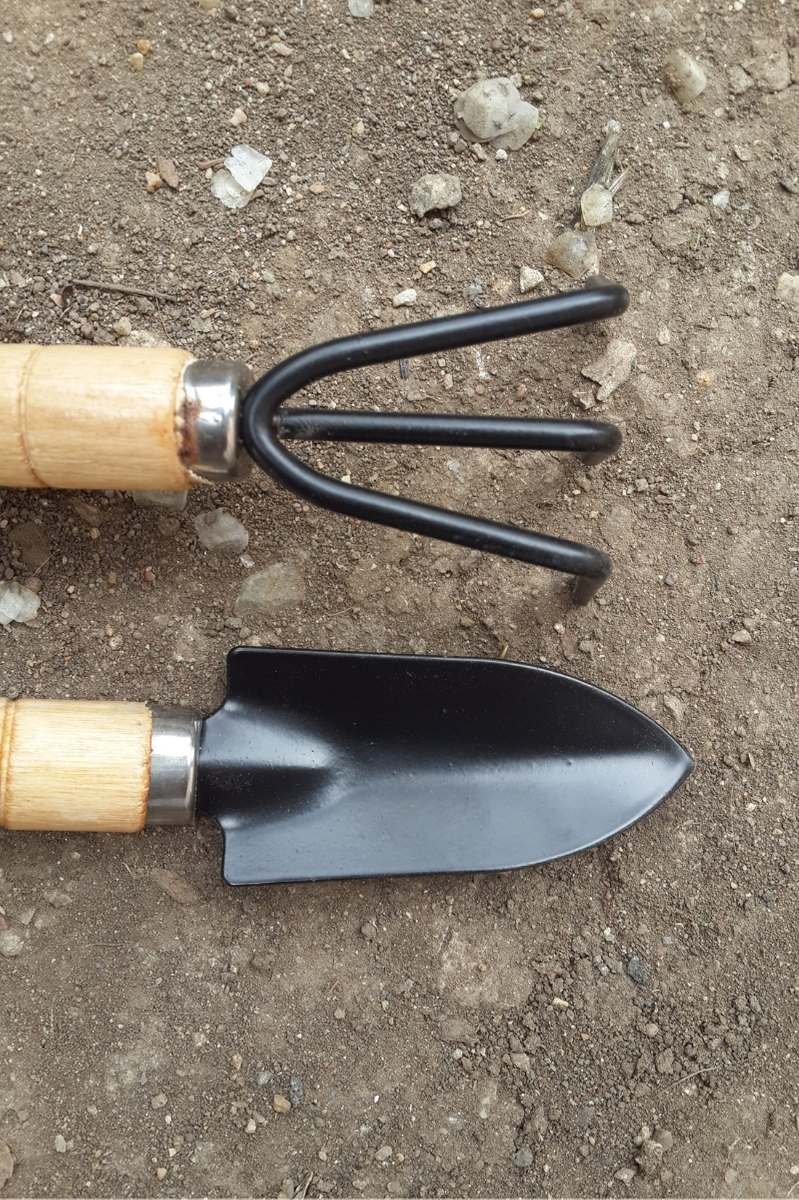
Table of Contents
What hand tools do I need?
There are hundreds of different kinds of garden hand tools—trowels, spades, weeders, pruners, hoes, cultivators, oh my! But a savvy gardener just has a few, high-quality tools that they use every day. If you are just starting out, here is our list of must-haves:
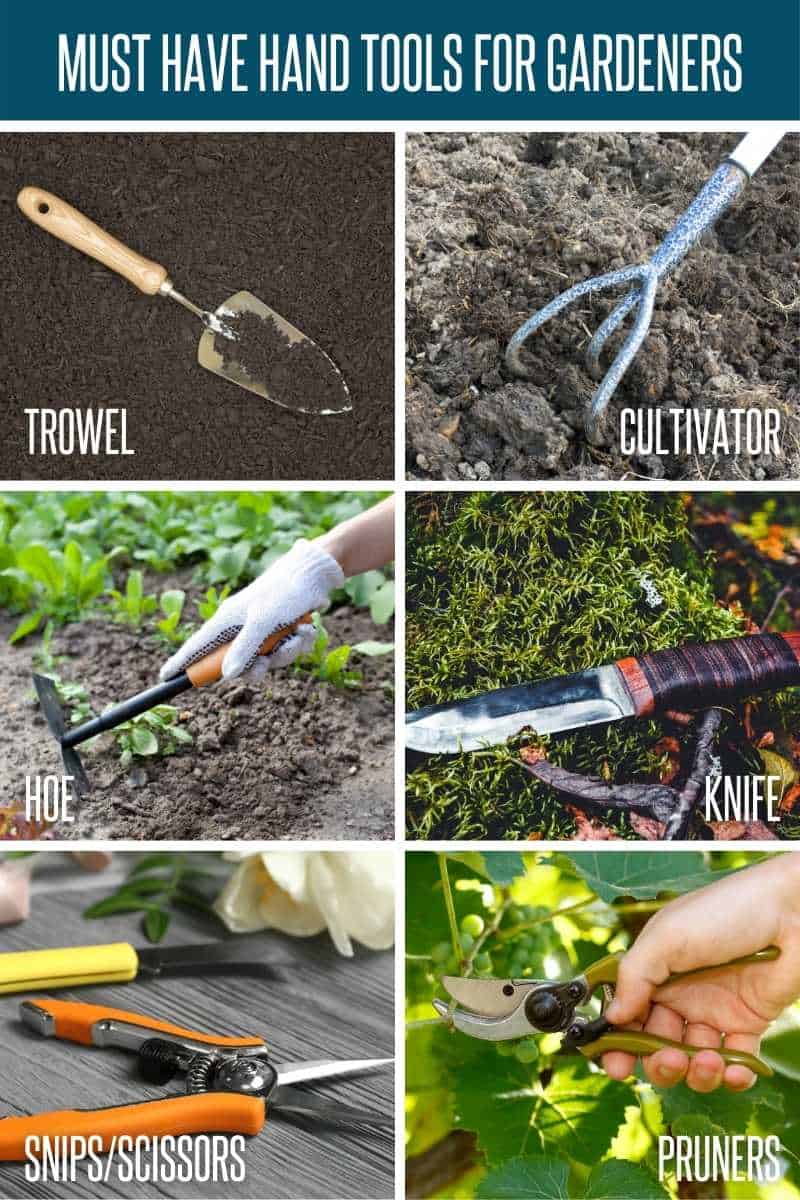
- Trowel—AKA: a mini shovel. A trowel is a must-have hand tool for every gardener. Invest in a good one with inch markings and a sturdy handle.
- Cultivator—AKA: a manual rototiller or mini-rake. Use this to mix in soil amendments, aerate the soil, rake in seeds, or rake back mulch. Many tools have a cultivator on one side, and a hoe on the other (like this one).
- Hoe—A sharp hoe is a must-have for removing weeds in your beds and containers. There are at least a dozen different shapes of hand hoes, but we really like either a classic hoe, circular hoe, or Nejiri Gama hoe.
- Harvest/Weeding Knife—Growing up, there was always an old knife stuck into the top of the fence post in my parents’ garden, and I have one now, too! An old kitchen knife works, but you can also upgrade to a Hori Hori weeding and harvest knife if you want the real deal.
- Scissors or Shears—A good pair of garden scissors or shears is a must-have for harvesting herbs and greens. These small pruning snips have a permanent spot in my garden harvest basket.
- Hand Pruners—AKA: secateurs. A good, sharp pair of hand bypass pruners will make your life so much easier!
How do I store hand tools?
For the longest life, keep hand tools covered and out of the weather. Make sure they are clean before you put them away. On tools with exposed metal, a thin layer of mineral oil can keep them from rusting if stored in a humid environment.
How do I clean and disinfect hand tools?
Hand tools should be regularly cleaned and disinfected. This is especially true if you used your tools on a diseased plant—you can easily spread bacterial and fungal diseases among plants on your tools.
For most (non-diseased plant) purposes, a gentle wash under the garden hose to clean off dirt and debris will do the trick. Make sure the tools are completely dry before you store them—you can dry them in the sun or by using a cloth.

To disinfect hand tools, mix together two cups of bleach and one gallon of water in a bucket. Submerge the tools for 10 minutes, and then rinse well with clean water. Dry completely in the sun or using a cloth. It’s a good idea to disinfect your tools between each growing season.
Growfully Protip
It is especially important to disinfect pruning tools (like hand pruners) before you prune susceptible fruit trees or berries.
How do I sharpen garden hand tools?
Many hand tools function much better when they have a razor-sharp blade. This is especially true for knives, pruners, shears, and hoes. Professional tool sharpening is available at most hardware stores and garden centers, and we recommend you do that at least once a year on your most-loved tools.
For a quick at-home sharpening, there are home sharpening tools that can touch up your pruners, shears, and hoes.
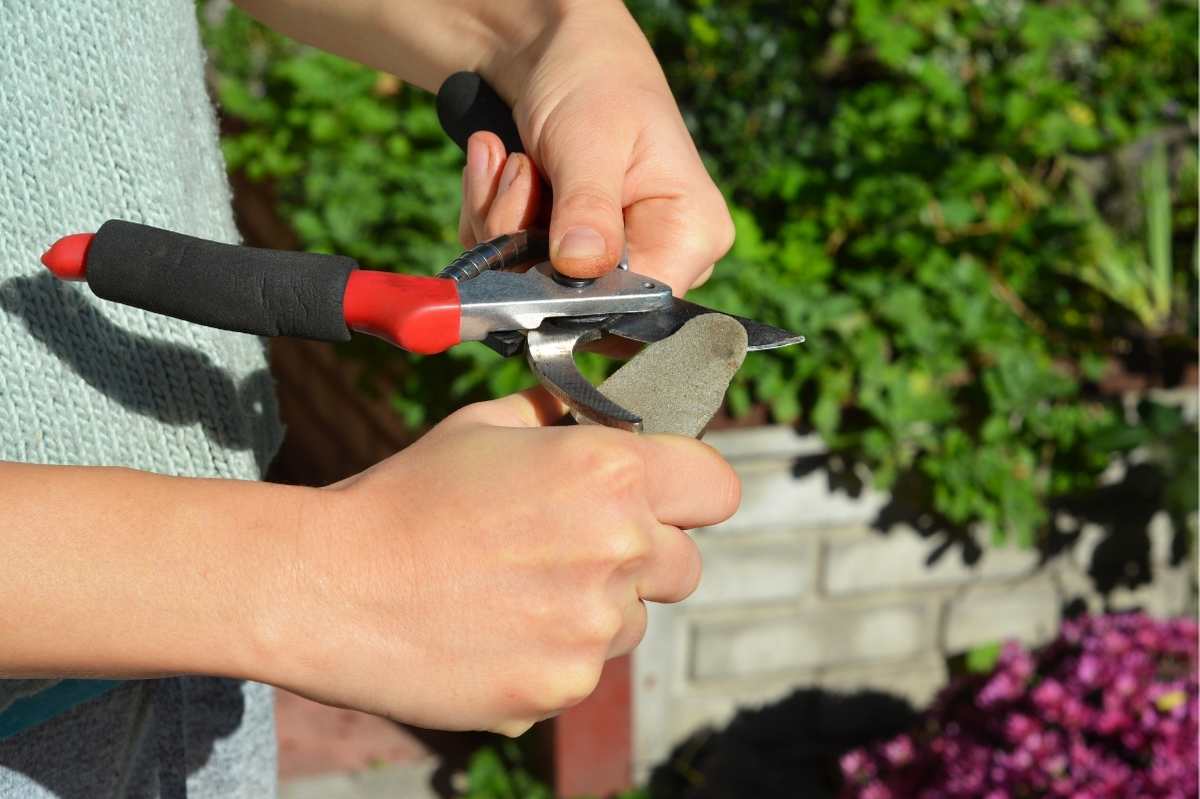
What should I look for when buying hand tools?
When buying hand tools, we recommend you look for tools with fiberglass handles or stainless steel handles and tines—in our trials, those have been the most durable. Tools that have plastic or wooden handles tend to not be as sturdy—especially if you happen to leave one out in the elements.
When shopping for tools, the spot where the element connects with the handle—typically a metal sleeve over the handle—should be sturdy and shouldn’t wiggle or move. That rivet or screw point is a weak spot in most hand tools, and if it’s already loose, it’ll only get worse in our experience.

If you have a chance to hold the tool before you use it, do so! This is especially true if you are left-handed. Make sure the tool feels good in your hands.
Some tools come with padding or comfort grip—if that makes the tool more comfortable for you to use, go for it. Just be aware that some of the foam comfort grips tend to break down quickly under UV exposure, so make sure to keep your tools packed away when not in use.
Where can I buy gardening tools?
Highly quality gardening tools are available at all big box stores and garden centers. We’ve also had great luck finding hand tools on Amazon!
What are the best garden hand tools?
We’ve pulled together a list of some of our favorite garden hand tools to get you started building your collection.
Preparing the Soil, Digging, and Planting
Trowels
Trowels come in a number of different sizes and shapes. We prefer smaller trowels (which are great for smaller hands) because they give you more control.
Our favorite hand trowel: Fiskars Ergo Hand Trowel
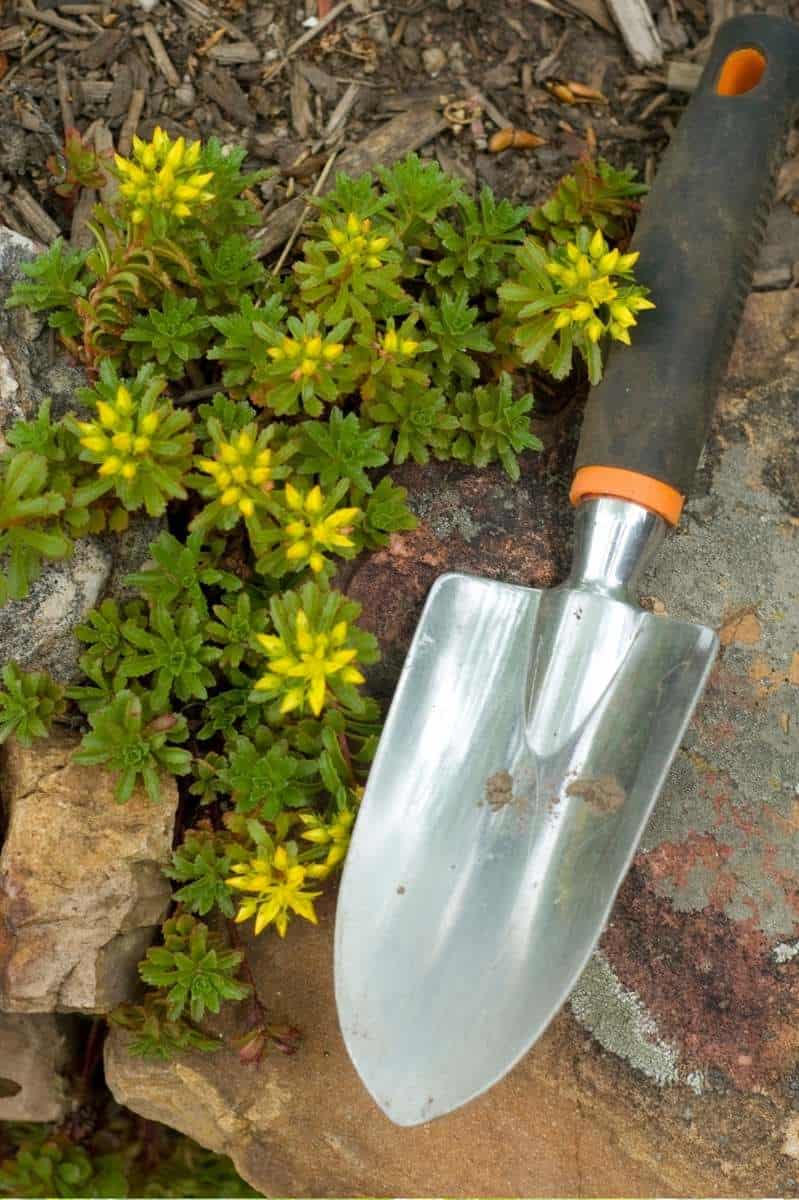
Transplanters
A subset of trowels that many folks find useful are transplanters—these specialty trowels typically have markings to help you measure planting depth for planting seedlings, plus serrated edges to help you cut through the soil.
Our favorite transplanter: Fiskars Transplanter
Bulb Planters
If you plan on doing a lot of bulb planting, you’ll want to invest in a bulb planter to help you dig perfect holes to drop your bulbs in. Since many folks plant bulbs in the ground, you might want to look at a bulb planter with a long handle to get yourself more leverage.
Our favorite bulb planter: Edward Tools Bulb Planter
Soil Scoops
Another shovel-like hand tool, soil scoops are large scoops with blunt edges that are useful for scooping out potting soil, compost, grass clippings, or other amendments. Since soil scoops don’t do a lot of heavy work, you can go for lightweight aluminum, composite, or plastic.
Our favorite soil scoop: Fiskars Composite Soil Scoop
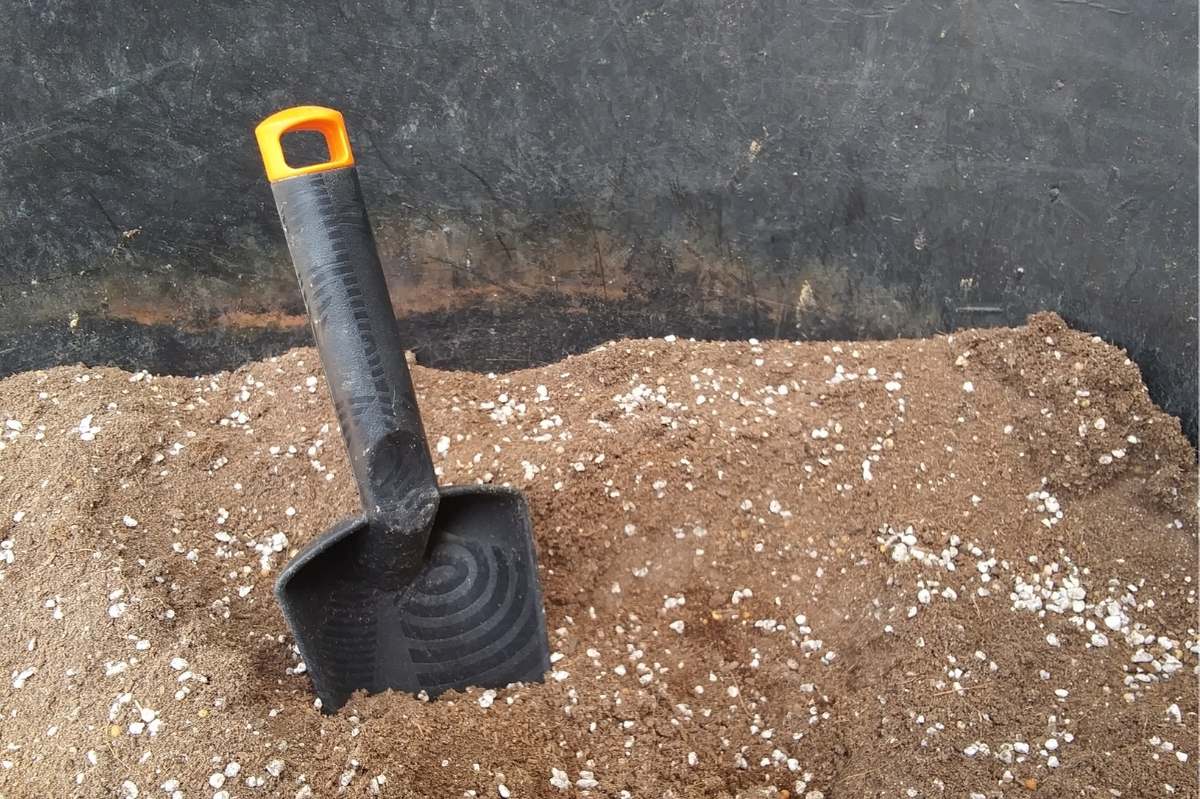
Cultivators
A cultivator is like a mini leaf rake that is maybe the single most used hand tool in the Growfully garden! Use it to rake in amendments, rake out leaves and other loose material in flower beds, aerate the soil around bedding plants, rake back mulch—it’s super versatile! Many times, cultivators and hoes come together in a 2-in-1 tool that saves space.
Our favorite cultivator: Edward Tools 2-in-1 Cultivator and Hoe

Weeding and Pruning
Hoes
A must-have for easy weeding (without a sore back or sore knees), a good, razor-sharp hoe is a good garden friend to have. There are dozens of different shapes and types of hoes that you can choose from. We recommend testing some out to see what works best for you in your garden.
Our favorite hoes: Classic hoe, circular hoe, or Nejiri Gama hoe.
Knives
A good garden knife is an incredibly versatile tool in the garden. You can easily use an old kitchen knife, but we also love garden-specific weeding and harvesting knives.
Our favorite garden knife: Hori Hori weeding and harvest knife

Hand Pruners
Hand pruners are a must-purchase for any home garden (especially one that has perennials, shrubs, or ornamental trees). There are two main kinds of hand pruners—bypass pruners and anvil pruners. Here’s the difference:
- Anvil pruners work by smashing the plant tissue with one side of the pruner—like dropping an anvil on the branch.
- Bypass pruners work like scissors—two sets of metal blades cross each other to slice off the branch. Bypass pruners are the best hand pruners for plant health.
Our favorite hand pruners: Gonicc Professional Bypass Hand Pruners

Harvesting
Scissors and Snips
A garden-dedicated pair of scissors will make harvesting your crops so much easier! We like smaller snips because they can harvest herbs and greens, but are also small enough to be used to clip off seedlings when thinning.
Our favorite snips: Fiskars Micro-Tip Pruning Snips

Of course, there are hundreds of other different kinds of garden hand tools you can spring for, but we think this list will give you everything you need to get growing. Enjoy!

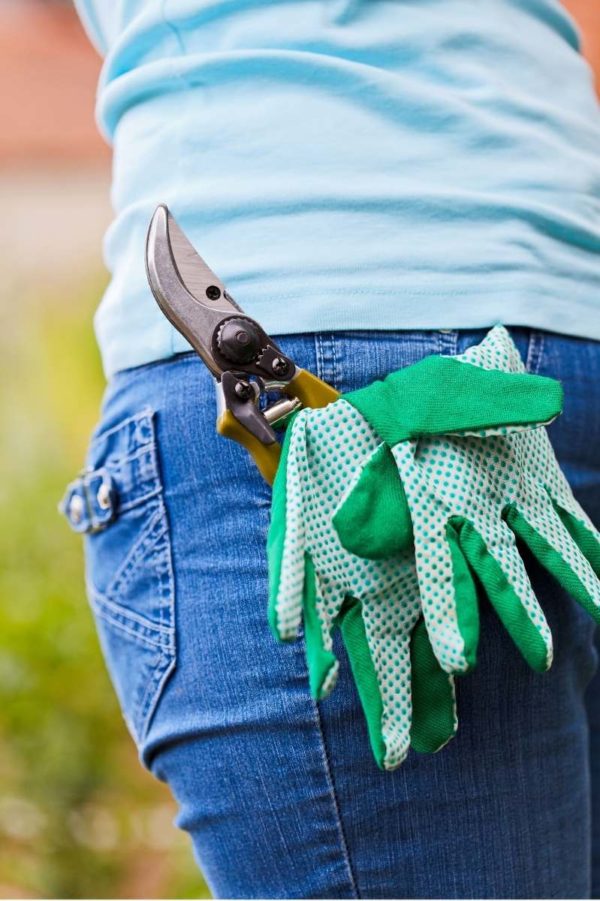






I love to garden and I’m in the process of putting in raised beds at our new house with the kids. these would be so nice to him because currently we really don’t have any nice garden tools to use